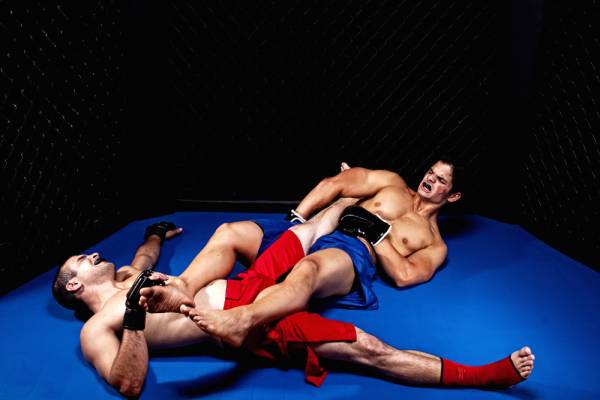Ever heard a grappler talk about going to “gi” or “no-gi” class? What does that mean? How do they compare? Do they differ in ways that make a difference?
There are three main ways that gi and no-gi grappling differ:
- Clothing
- Strategy and Techniques
- Tournament Rules
Clothing
The first, obvious difference between gi and no-gi grappling is in the fashion statements. In gi grappling, practitioners wear – you guessed it – a gi.
Ever heard a grappler talk about going to “gi” or “no-gi” class? What does that mean? How do they compare? Do they differ in ways that make a difference?
There are three main ways that gi and no-gi grappling differ:
- Clothing
- Strategy and Techniques
- Tournament Rules
Clothing
The first, obvious difference between gi and no-gi grappling is in the fashion statements. In gi grappling, practitioners wear – you guessed it – a gi.
A “gi” can also be called a “kimono” and consists of a pair of heavy cotton drawstring pants, usually with reinforced knees, and a heavy cotton jacket with a thick collar and a hem that is notched on either side.
One jacket lapel crosses over the other and the whole lot is kept closed with the famous (infamous?) belt. Men tend to wear either a rash guard, a t-shirt, or nothing under the jacket, and perhaps compression shorts under the pants. Women might wear a sports bra, a rash guard, and then compression shorts as well.
In no-gi grappling, practitioners wear – you guessed it – no gi. Instead, they usually wear attire associated with surfing, specifically rash guards and board shorts.
Ultimate Fighting Championship aficionados might be used to seeing male mixed martial artists in either only compression shorts or compression shorts under board shorts, but no shirt. And female mixed martial artists tend to wear sports bras, perhaps a rash guard, and compression shorts and perhaps board shorts.
So there are a variety of options, though straight grappling academies tend to prefer students to cover up on top; unlike the professional mixed martial artist, typical grappling students have no financial incentive to put their faces that close to somebody’s bare armpit.
Also in mixed martial arts events, you might see a referee checking to make sure the men are wearing cups. I have heard this referred to as the “jock knock,” due to the fact the athlete frequently raps on the cup with his knuckles to prove it is there. (And yes, I wish I could take credit for inventing the phrase.)
Some straight grappling tournaments forbid the wearing of cups, while others do not. For regular training, different men have different preferences, and of course, women do not need to deal with this at all.
Strategy and Techniques
Another difference between gi and no-gi grappling has to do with strategy. In gi grappling, use of the gi – sleeves, collar, pant legs – figures prominently in gaining and controlling position, as well as in applying submissions.
Practitioners can execute collar chokes, or use the sleeve or the hem of the gi to tie up a partner’s arm or hand. In no-gi grappling, on the other hand, grabbing the clothes is generally not allowed. Instead, practitioners can try to control an opponent by gripping the body’s natural handles: the neck, the wrist, the elbow, the knee, the hips, etc.
This is also allowed in gi grappling, but is the only option in no-gi. The lack of heavy cotton cloth to soak up sweat in no-gi grappling also tends to affect the pace of a match and the ease with which an opponent can slip out of a bad position.
Tournament Rules
There are some rule differences in gi and no-gi competition as well. Different tournaments have different expectations, but a general rule is that a move called a heel hook, which is allowed in advanced no-gi divisions, is not allowed in any gi divisions. A heel hook is a move that puts potentially serious pressure on the knee.

It is difficult enough to defend no-gi, but the idea is that the potential for getting tangles in the gi pants make it dangerously difficult to defend, even among expert grapplers. So heel hooks are generally not allowed in the gi.
There also might be some differences in points awarded, depending on the tournament. For instance, in no-gi grappling, a takedown to side control frequently merits three points while in gi grappling, it merits only two. As another example, knee-on-belly is generally a points position (two) in gi grappling but not in no-gi.
So the next time you watch grappling, note some of the characteristics of gi versus no-gi. See if you notice differences in pacing, types of moves, etc, and see if you have a preference!






